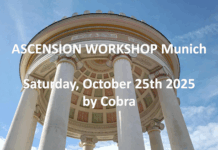
From Guest Writer Tiffany Harper:
You’ve probably heard that sitting and breathing mindfully enhances mental clarity, reduces anxiety, and lowers or relieves stress. But how is meditation connected to the brain? Numerous scientific studies have shown that meditation leads to positive psychological changes. And this makes the connection between meditation and the brain more profound.
In recent years, meditation has become the norm. People are spending enormous amounts of time focusing on their breaths and learning to appreciate the present moment. Meditation groups are being launched every day in different places such as schools, senior centers, and communities. It has become so popular that the business community has joined.
Psychologists have confirmed what every meditator experiences: meditation is great for the body and mind. Thanks to the rapid advancement of technology, science has clearly shown how meditation affects the most complex organ in the human body. Recent studies have confirmed that meditation nurtures specific brain parts that contribute to peace and wellbeing.
Effects of meditation
According to neuroscientist Sara Lazar, four regions of the brain that promote health become substantial when an individual starts meditating. Also, the areas linked to undesirable behavior shrink. Let’s focus on these areas.
1. Posterior Cingulate
This area is linked to wandering thoughts and the degree of self-relevance while processing information. The larger and stronger this area is, the more realistic the sense of self is and the less wandering thoughts one has.
Meditation improves the ability of the brain to focus on the present moment without regret, judgment, and anticipation. It also enhances sensations and emotions without identifying with them. Meditation increases the density of this area.
2. Left hippocampus
This is the area of the brain that makes it possible for us to learn new things. Most of the tools that are used for memory and cognitive ability can be found here. Emotional regulators linked to empathy and self-awareness are also located here. Research studies have shown that the thickness of this area grows thanks to meditation.
3. Pons
This is one of the busiest and most important parts of the human brain. All the neurotransmitters that regulate the activities of the brain are produced here. Pons is located at the center of the brain stem and it’s responsible for several important functions such as facial expressions, physical functioning, processing sensory input, and sleep. The pons is strengthened by meditation.
4. Amygdala
This is another critical area of the brain that is responsible for producing feelings of anxiety, stress, and fear. Unlike other brain parts that we’ve discussed, the amygdala shrinks during meditation.
Researchers have discovered that the amygdala is physically smaller in the brains of meditators. The smaller it is, the weaker it becomes especially when dictating emotional responses like fight or flight. This is why you feel so great every time you meditate. So, what are you waiting for, genius?
Since you are reading this article, it’s clear that you are interested in meditation and its benefits. Can meditation cure depression? Let’s find out!
Meditation and depression
Depression is among the top mental health conditions that people suffer from today. It shows up in different ways. Some of the chronic symptoms of depression include low mood, hopelessness, increased fatigue, anxiety, insomnia, irritability, changes in appetite, and suicidal thoughts to name a few.
Common treatments for depression include seeing a therapist, medication, and making lifestyle changes. Depression might not go away completely even with treatment. However, adding meditation to your daily routine can lead to remarkable transformations.
1. It changes your response to negative thoughts
In most cases, depression involves lots of dark thoughts. You may start feeling worthless, hopeless, or even angry at the world and yourself. This makes meditation the appropriate remedy because it involves enhancing your awareness around experiences, thoughts, and emotions.
Meditation enables you to connect with your thoughts and emotions without judging yourself. Meditation is not about pushing away or pretending that you don’t have dark thoughts. It’s about accepting them and letting go. Meditation has the power to disrupt negative thought patterns.
2. You learn how to manage depression effectively
Learning to stay present can help you take note of a depressive episode before it starts affecting you. Meditation makes it easier for you to pay attention to your thoughts and emotions. When you start experiencing negative patterns of thought and other symptoms such as fatigue, irritability, or anxiety, you can choose to focus on improving yourself.
Research studies have shown that mindfulness-based therapy, an approach that incorporates different meditation practices can lower the chances of depression. Another research suggests that meditation can improve symptoms of depression when you start incorporating them in your life.
Types of meditation that can treat depression
There are different types of meditation practices that you can incorporate in your life to exterminating depression. While meditation has proven to treat depression, it doesn’t mean that you should abandon other treatments and medications that you are already using.
1. Loving-kindness meditation
This type of meditation aims at cultivating an attitude of love and kindness towards others and most importantly, yourself. Studies have found that people who practice this type of meditation have a positive outlook, experience fewer negative emotions, and are less likely to be depressed. Loving-kindness meditation can help in quelling criticism, blame, and regret.
2. Mindfulness meditation
Think of mindfulness meditation as the mother of all types of meditation. All the other types of meditation originate from mindfulness. Mindfulness meditation is all about focusing on the present moment and being aware of the moment to moment changes in thoughts and emotions. Breath is used as an anchor to keep your attention on the present moment and retrain your mind. Numerous studies have shown that mindfulness meditation can reduce stress, anxiety, and depression.
3. Breath awareness meditation
Your breath plays a critical role during meditation. Breath awareness meditation can also be referred to as mindful breathing. In less than twenty minutes every day, you can focus on inhaling and exhaling. And this can improve your mood and reduce emotional reactivity. The best thing about mindful breathing is you don’t have to set aside time to pay attention to breathing. You can do it while walking, standing, sitting, or lying down.
4. Yoga
Yoga combines a wide range of physical postures and breathing techniques. Therefore, its effects on anxiety and depression cannot be ignored. Studies have shown that Kundalini yoga – a type of yoga that incorporates chanting – helps in treating obsessive-compulsive disorders.
Kundalini yoga helps in banishing anger, managing fear, and eliminating negative thoughts. Other studies have found that yoga eases depression, anxiety, and panic while improving quality of life and sleep in people with anxiety disorders. Before you start yoga, it’s important to talk to your doctor or therapist. As the saying goes, better safe than sorry.
5. Visualization
The majority of people spend most of their time focusing on the negative side of life. However, focusing on the positive side stimulates calm and peace of mind. Visualization practices can be led by another person or you can direct yourself by recording a session.
Imagery changes how people recall negative situations. They also encourage people to imagine happy endings in the activities that they are planning to undertake. Visualization is a powerful type of mediation that can transform your physical world.
6. Body scan meditation
Body scan meditation involves shifting your attention from your external world to different parts of your body. Body scanning can be incorporated with breath awareness meditation for better results. Body scanning enhances your awareness and reduces the intensity of reactions to anxiety and stress.
Tips and tricks
There is no right or wrong way when it comes to meditation. Here are a few pointers that will help you achieve your goals.
1. Create a ritual
Forming the habit of meditation will increase your chances of success. As you start, don’t be too hard on yourself. Committing five minutes every day is enough to start experiencing different results. You can do a body scan meditation before sleeping or getting out of bed in the morning. Finding the right approach and sticking with will transform your life.
2. Use your creativity
Maybe a seated meditation can work for you. Or if you like spending your time outdoors, you might prefer meditating while standing or walking. The different types of meditation make it easier for you to incorporate them into your schedule without struggling. Figuring out what works for you is the most important thing in your journey.
3. Be patient
Meditation is not as easy as it sounds. It takes a lot of time and effort to start seeing results. You’ll start noticing small improvements but you won’t feel different and new overnight. Studies show that the effects can be noticed in a few weeks to several months. Therefore, you need to be patient with yourself.
4. Seeking help
Depression is a serious mental condition. While meditation can cancel out most of its symptoms, it’s not enough on its own. You should seek help from a qualified therapist so that you can heal faster and achieve your goals. You should keep in mind that nothing can cure depression completely. But by incorporating meditation practices into your schedule, you’ll have an easy time managing your thoughts and emotions.
Conclusion
Meditation is one of the best ways to exterminate depression and improve the quality of your life. Meditation is for everyone. Which type of meditation are you going to incorporate into your life today?
Author Bio: Tiffany Harper is a freelance writer and journalist. She is an experienced writer expert in wellness and healthcare areas, who works now with the research on healthcare issues at top essay writing service, dissertation writers service and bestcustomessay.org. Tiffany helps people and medical professionals overcome the challenge of the current pandemic.
Disclaimer: We at Prepare for Change (PFC) bring you information that is not offered by the mainstream news, and therefore may seem controversial. The opinions, views, statements, and/or information we present are not necessarily promoted, endorsed, espoused, or agreed to by Prepare for Change, its leadership Council, members, those who work with PFC, or those who read its content. However, they are hopefully provocative. Please use discernment! Use logical thinking, your own intuition and your own connection with Source, Spirit and Natural Laws to help you determine what is true and what is not. By sharing information and seeding dialogue, it is our goal to raise consciousness and awareness of higher truths to free us from enslavement of the matrix in this material realm.
 EN
EN FR
FR


























This article highlights the profound impact of meditation on the brain and its natural ability to combat depression. Through <a href="https://www.sprypublishers.com/">paper publication service</a>, it's essential to disseminate this valuable research widely, as it offers hope and a holistic approach to mental well-being.
I just found this blog and have high hopes for it to continue. Keep up the great work, its hard to find good ones. I have added to my favorites.
Thanks for the awesome post I feel happy to read this post thanks for sharing this post. I constantly read the smaller articles and clarify their motives, which also happens with this article!
It's really an amazing blog great to get the relatives information through your site for all the people, I appreciate your efforts. Thank you for sharing your knowledge and experience with me
Appreciative for sharing an especially confounding post. It was really helpful. Keep on sharing.
Nice post thanks a lot
Thanks for sharing , perfect article!The structure of an essay for this type of assignment remains the same, regardless of its length. Here are some useful guidelines that will help you craft an interesting outline for your essay. The most important parts of an essay are the introduction, the body, and the conclusion. Knowing the structure of an essay helps you come up with a unique and compelling topic. Then, follow the guidelines to write a good sport assay.
good post